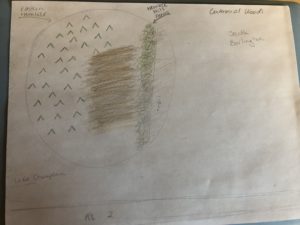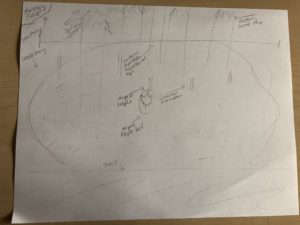Hello all. Visiting the pine clearing in late October reveals that the area looks similar to the rest of the year because it’s comprised of almost entirely conifers. Although the Eastern White Pine do not lose their leaves as dramatically as deciduous forests, they are continuously shedding needles which decompose on the forest floor. The decomposing pine needles make for a very acidic, nutrient rich soil. Since the site is right by a stream, the soil is also very most which explains the presence of Eastern Hemlock which prefers moist, acidic soil and lots of shade. There is evidence of chipmunk burrows amongst the cover of pine needles, measuring about 5-6 inches in width. I found three of these, far from any of the trees. Perhaps the presence of chipmunks will draw some bigger predators to Centennial Woods or birds of prey such as hawks or owls. Although certainly not owls, I did find evidence of woodpeckers in the wood of 2 of the Eastern Pines Trees which had large oval shaped gouge marks. It’s common to see this marks in confiders because they typically have softer wood than hardwoods such as oak or maple. Looking forward to seeing the spectacular colors of late fall!


